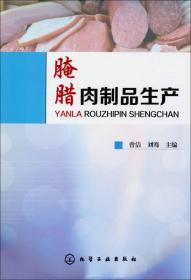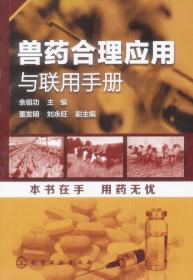
非常规冶金新技术(英文版)
全新正版 套装书默认发单本 下单先咨询
¥ 128 全新
仅1件
江西南昌
认证卖家担保交易快速发货售后保障
作者彭金辉、张利波、夏洪应、巨少华、陈菓 著
出版社冶金工业出版社
出版时间2015-03
版次1
装帧平装
上书时间2024-11-11
- 最新上架
商品详情
- 品相描述:全新
图书标准信息
- 作者 彭金辉、张利波、夏洪应、巨少华、陈菓 著
- 出版社 冶金工业出版社
- 出版时间 2015-03
- 版次 1
- ISBN 9787502468668
- 定价 128.00元
- 装帧 平装
- 开本 16开
- 纸张 胶版纸
- 页数 501页
- 字数 779千字
- 正文语种 英语
- 【内容简介】
-
《非常规冶金新技术(英文版)》通过精选作者彭金辉、张利波、夏洪应、巨少华、陈菓等研究团队已发表的高质量英文论文,全面介绍了非常规冶金的新技术,全书共分四部分,分别为微波冶金新技术、微波新技术在材料和化工领域的应用、超声冶金新技术、微流体新技术。
《非常规冶金新技术(英文版)》适合冶金专业的本科生和研究生阅读,也适合从事冶金技术研究的科研人员阅读参考。 - 【目录】
-
Chapter Ⅰ New Technology of Microwave Metallurgy
Microwave Sensor for Measuring the Properties of a Liquid Drop
A New Equation for the Description of Dielectric Losses under Microwave Irradiation
Microwave Absorbing Properties of High Titanium Slag
Microwave Cavity Perturbation Technique for Measuring the Moisture Content of Sulphide Minerals Concentrates
Effect of Temperature on Dielectric Property and Microwave Heating Behavior of Low Grade Panzhihua Ilmenite Ore
Dielectric Properties and Temperature Increase Characteristics of Zinc Oxide Dust from a Fuming Furnace
Temperature and Moisture Dependence of the Dielectric Property of Silica Sand
Dielectric Properties and Optimization of Parameters for Microwave Drying of Petroleum Coke Using Response Surface Methodology
Dimension Optimization for Silica Sand Based on the Analysis of Dynamic Absorption Efficiency in Microwave Drying
Optimization of Processing Parameters for Microwave Drying of Selenium—rich Slag Using
Incremental Improved Back—propagation Neural Network and Response Surface Methodology
Dielectric Properties and Microwave Heating Characteristics of Sodium Chloride at 2.45 GHz
Preparation of Reduced Iron Powders from Mill Scale with Microwave Heating:Optimization Using Response Surface Methodology
Carbothermal Reduction of Low——grade Pyrolusite by Microwave Heating
Pilot——scale Production of Titanium——rich Material Using Ilmenite Concentrates as Raw Materials by Microwave Reduction
Optimization of Preparation for C03 04 by Calcination from Cobalt Oxalate Using Response Surface Methodology
Prediction Model of Ammonium Uranyl Carbonate Calcination by Microwave Heating Using Incremental Improved Back——Propagation Neural Network
Investigation on Phase Transformation of Titania Slag Using Microwave Irradiation
Leaching of Palladium and Rhodium from Spent Automobile Catalysts by Microwave Roasting
Leaching Zinc from Spent Catalyst:Process Optimization Using Response Surface Methodology
Green Evaluation of Microwave——assisted Leaching Process of High Titanium Slag on Life Cycle Assessment
Removing Chlorine of CuCl Residue from Zinc Hydrometallurgy by Microwave Roasting
Dechlorination of Zinc Dross by Microwave Roasting
Removal of Fluorides and Chlorides from Zinc Oxide Fumes by Microwave Sulfating Roasting
An External Cloak with Arbitrary Cross Section Based on Complementary Medium and Coordinate Transformation
An Efficient 2一D FDTD Method for Analysis of Parallel—Plate Dielectric Resonators
Efficient Analys is of Ridged Cavity by Modal FDTD Method
Parallel Algorithm for the Effective Electromagnetic Properties of Heterogeneous Materials on 3D RC Network MOdel
Chapter Ⅱ New Technology of Microwave Applications in Material and Chemical Engineering
Microwave Plasma Sintering of Nanocrystalline Alumina
Influences of Temperatures on Tungsten Copper Alloy Prepared by Microwave Sintering
Application of Response Surface Methodology(RSM)for Optimization of the Sintering Process of Preparation Calcia Partially Stabilized Zirconia(CaO—PSZ)Using Natural Baddeleyite
Microwave Initiated Self—Propagating High——Temperature Synthesis of SiC
Microwave Ignited Combustion Synthesis of Aluminium Nitride
Microwave Initiated Self—Propagating High Temperature Synthesis of Materials:A Review
……
Chapter Ⅲ New Technology of Ultrasonic Metallurgy
Chapter Ⅳ New Technology of Microfluidic
About the Laboratory
点击展开
点击收起
— 没有更多了 —












以下为对购买帮助不大的评价